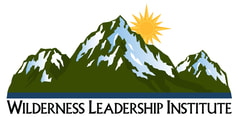Snowpack Summary December 28, 2022
Posted by Allen Giernet @ (this summary expires in 24 hours)
This summary applies to backcountry areas only.
The Bottom Line –
We are still in early season low tide conditions. Data is limited and so is snow. Travel at this time will be somewhat difficult and potential for skiing/ riding may be as well. We just received a warm storm cycle with little to no snow reported at resort elevations (aprox. 8,000’), possible snow at the highest elevations and rain to mixed rain and snow at lower elevations. Another chance of snow is forecast over the next couple of days into New Years with a potential for rain and snow at lower elevations and a better chance for snow on Saturday. There will be a mix of conditions and using your own judgement and observations will be key. Look for a potential of wet snow, storm slabs and wind slabs as these cycles pass through. Adding to the problems is that it will still be early season conditions with exposed obstacles so a slip and fall can bring hazardous consequences. Exercise caution if venturing out into the mountains and use avalanche protocols, travel with a partner and bring your beacon, shovel and probe."If Theres Enough Snow To Ride Theres Enough Snow To Slide".
Early season will pose many hazards besides avalanches regardless of your mountain activities rather it be a hike, snowshoeing or skiing/ boarding. Exposed obstacles and low tide conditions should be on your mind. Warming cycles followed by cold spells create firm fast and icy conditions very often in our mountains, a slip and fall in these early season conditions can be catastrophic as slide for life scenarios are some of our biggest rescue situations. Early season snowfall also brings the foundation for our base and can be the future weak layer depending upon conditions. Watch weather conditions and keep track on what is happening in the snowpack starting now and following the trends all season will help prepare you to make more informed decisions.
During this period as we wait for the snowpack to develop it is a great time to
brush up on your avalanche training or look into booking an avalanche course. There are many avalanche awareness programs throughout the country and many are virtual and free.
SCSAC will begin posting weather forecasts and snowpack summaries once we have a snowpack developed.
Please share any information when you are out in the mountains. Even a photo is helpful.
Please share your observations with us at the avalanche center Submit Reports page.
Posted by Allen Giernet @ (this summary expires in 24 hours)
This summary applies to backcountry areas only.
The Bottom Line –
We are still in early season low tide conditions. Data is limited and so is snow. Travel at this time will be somewhat difficult and potential for skiing/ riding may be as well. We just received a warm storm cycle with little to no snow reported at resort elevations (aprox. 8,000’), possible snow at the highest elevations and rain to mixed rain and snow at lower elevations. Another chance of snow is forecast over the next couple of days into New Years with a potential for rain and snow at lower elevations and a better chance for snow on Saturday. There will be a mix of conditions and using your own judgement and observations will be key. Look for a potential of wet snow, storm slabs and wind slabs as these cycles pass through. Adding to the problems is that it will still be early season conditions with exposed obstacles so a slip and fall can bring hazardous consequences. Exercise caution if venturing out into the mountains and use avalanche protocols, travel with a partner and bring your beacon, shovel and probe."If Theres Enough Snow To Ride Theres Enough Snow To Slide".
Early season will pose many hazards besides avalanches regardless of your mountain activities rather it be a hike, snowshoeing or skiing/ boarding. Exposed obstacles and low tide conditions should be on your mind. Warming cycles followed by cold spells create firm fast and icy conditions very often in our mountains, a slip and fall in these early season conditions can be catastrophic as slide for life scenarios are some of our biggest rescue situations. Early season snowfall also brings the foundation for our base and can be the future weak layer depending upon conditions. Watch weather conditions and keep track on what is happening in the snowpack starting now and following the trends all season will help prepare you to make more informed decisions.
During this period as we wait for the snowpack to develop it is a great time to
brush up on your avalanche training or look into booking an avalanche course. There are many avalanche awareness programs throughout the country and many are virtual and free.
SCSAC will begin posting weather forecasts and snowpack summaries once we have a snowpack developed.
Please share any information when you are out in the mountains. Even a photo is helpful.
Please share your observations with us at the avalanche center Submit Reports page.



















